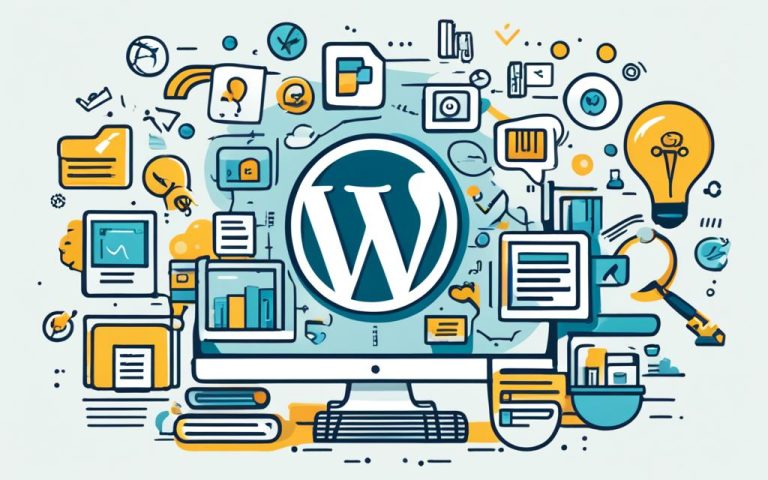WordPress Author Role Explained: Access & Capabilities
WordPress is a popular platform utilized by millions of websites around the world. In order to effectively manage a website and control user access, WordPress has implemented a user role system. Understanding the different user roles and their capabilities is key to ensuring efficient content management and enhancing website security.
One of the important user roles in WordPress is the Author role. As an author, users have specific access and capabilities within a website that allow them to contribute and manage content. This includes the ability to create and edit posts, publish their own articles, and manage their own media files.
Authors can focus on producing high-quality content without the need for administrative or moderation tasks. They have the freedom to express their ideas and contribute their expertise to the website.
However, it’s important to note that the Author role has its limitations. Authors do not have access to the full range of administrative tasks or the ability to manage other user accounts. This ensures that the website remains secure and only authorized individuals have the power to make significant changes.
To illustrate the capabilities of an Author, let’s consider an example. An Author named Jane is a subject matter expert in a particular field and has been assigned the role of an Author on a WordPress website. She regularly writes articles, edits them as necessary, and publishes them on the website. Jane can also manage her own media files, adding relevant images and videos to enhance her articles.
Having a clear understanding of the WordPress Author role and its capabilities is essential for website owners and administrators. Assigning the appropriate user roles to individuals based on their responsibilities ensures a smooth workflow and prevents unauthorized access to sensitive website features.
In the following sections, we will dive deeper into the various default user roles in WordPress, the capabilities they possess, and how to customize and create user roles if needed. By the end of this article, you’ll have a comprehensive understanding of WordPress user roles, access, and capabilities.
Understanding the WordPress User Roles
In WordPress, user roles play a crucial role in determining the access and capabilities of each user within a website. By default, WordPress provides five user roles: Administrator, Editor, Author, Contributor, and Subscriber. Let’s take a closer look at each role and their respective capabilities:
| Role | Capabilities |
|---|---|
| Administrator | The Administrator role has the highest level of access and control. Administrators can perform tasks such as site administration, user management, content creation, and plugin/theme management. |
| Editor | Editors have full access to all posts, pages, comments, categories, and tags. They can also upload media files and manage them. |
| Author | Authors have the ability to publish and manage their own posts. They can also create and edit their own content. |
| Contributor | Contributors can write and edit their own posts but do not have the permission to publish them. They can submit their content for review. |
| Subscriber | Subscribers have the least amount of capabilities. They can only manage their user profile and do not have access to content creation or management. |
Each user role in WordPress has its own set of capabilities, with higher roles having more permissions compared to lower roles. These default roles provide the foundation for managing user access and controlling the tasks users can perform within the website.
It’s important to note that WordPress also provides the flexibility to customize and create additional user roles based on specific requirements. This allows website owners to fine-tune the permissions and access levels, granting users the appropriate capabilities for their responsibilities.
The Members plugin is a valuable tool for customizing user roles and their capabilities. This plugin offers a user-friendly interface for modifying existing roles or creating new ones, enabling website owners to tailor the user experience to their precise needs.
Understanding the default user roles in WordPress and their capabilities is essential for effectively managing a website and ensuring the appropriate level of access to users. By customizing user roles when necessary, website owners can enhance security and streamline content management.
Customizing and Creating User Roles
While the default user roles in WordPress are sufficient for most websites, there may be cases where customizing or creating new user roles is necessary. This can be achieved using plugins like Members, which allows users to manage and modify user roles and their capabilities.
By editing existing roles or creating new ones, website owners can fine-tune the permissions and access levels of their users. The Members plugin provides a user-friendly interface for adding or removing capabilities for each role. Custom user roles can be useful when additional permissions are needed for specific tasks or to restrict certain actions on the website.
Benefits of Custom User Roles
- Enhanced flexibility in determining user permissions
- Improved security by restricting unauthorized access
- Efficient management of different user responsibilities
- Optimized workflow and collaboration among team members
“Custom user roles offer website owners granular control over user permissions, ensuring that each user has the appropriate level of access to perform their tasks effectively.”
The Members Plugin
The Members plugin simplifies the process of customizing user roles and permissions in WordPress. With its intuitive interface, users can easily add or remove capabilities for each role without the need for complex coding or manual configuration.
Some key features of the Members plugin include:
- Creation of new user roles with specific capabilities
- Modification of existing user roles to meet unique requirements
- Management of user capabilities at a granular level
- Control over content access and editing permissions
By leveraging the capabilities of the Members plugin, website owners can tailor the user experience and ensure that each user has the necessary permissions to fulfill their role effectively.
Custom user roles provide website owners with a powerful tool to customize WordPress user permissions and create a secure and efficient user management system. With the flexibility offered by the Members plugin, managing user roles and capabilities becomes a seamless process, empowering website owners to maintain control over their website’s operations.
Conclusion
Understanding the user roles and capabilities in WordPress is essential for efficient website management and controlling user access. By familiarizing themselves with the default roles and their permissions, site owners can assign appropriate roles to users based on their responsibilities. This ensures that each user has the necessary access to perform their tasks without granting unnecessary privileges.
Customizing user roles provides website owners with the flexibility to tailor permissions according to specific needs. With the help of plugins like Members, modifying existing roles or creating new ones becomes relatively easy. This empowers website owners to fine-tune the access levels of their users, granting additional permissions when required or restricting actions for enhanced security.
Having a clear understanding of WordPress user roles not only streamlines content management but also contributes to website security. It allows site owners to maintain control over who can perform various actions on the website, ensuring that sensitive tasks are handled by authorized personnel. By leveraging plugins like Members, website owners can create a user role structure that aligns with their unique requirements, enhancing both efficiency and security.
In summary, being well-versed in WordPress user roles empowers website owners to effectively manage their websites by assigning appropriate roles, customizing user permissions, and maintaining control over user access. With the help of plugins like Members, creating and modifying user roles becomes a seamless process, ultimately contributing to an efficient and secure website environment.
FAQ
What are the pre-defined user roles in WordPress?
The pre-defined user roles in WordPress are Super Admin, Administrator, Editor, Author, Contributor, and Subscriber.
What is the highest-level user role in WordPress?
The Super Admin role has the highest level of access in WordPress.
What actions can an Administrator perform in WordPress?
Administrators in WordPress have complete control over all aspects of the website, including site administration, user management, content creation, and plugin/theme management.
What access does an Editor have in WordPress?
Editors in WordPress have access to all posts, pages, comments, categories, and tags, and can also upload media.
What permissions does an Author have in WordPress?
Authors in WordPress can publish and manage their own posts.
What capabilities does a Contributor have in WordPress?
Contributors in WordPress can write and edit their own posts, but cannot publish them.
What can a Subscriber do in WordPress?
Subscribers in WordPress can only manage their user profile.
Can I customize or create new user roles in WordPress?
Yes, you can customize or create new user roles in WordPress using plugins like Members.
How can I customize user roles in WordPress using the Members plugin?
The Members plugin provides a user-friendly interface for adding or removing capabilities for each role, allowing you to fine-tune the permissions and access levels of your users.
When should I consider customizing user roles in WordPress?
Custom user roles can be useful when additional permissions are needed for specific tasks or to restrict certain actions on the website.
Why is it important to understand WordPress user roles?
Understanding WordPress user roles is crucial for effectively managing a website and controlling user access. It allows you to assign appropriate roles to users based on their responsibilities.
How does understanding WordPress user roles enhance website security?
By having a clear understanding of WordPress user roles, you can ensure that users only have the necessary permissions and access levels, reducing the risk of unauthorized actions on your website.













